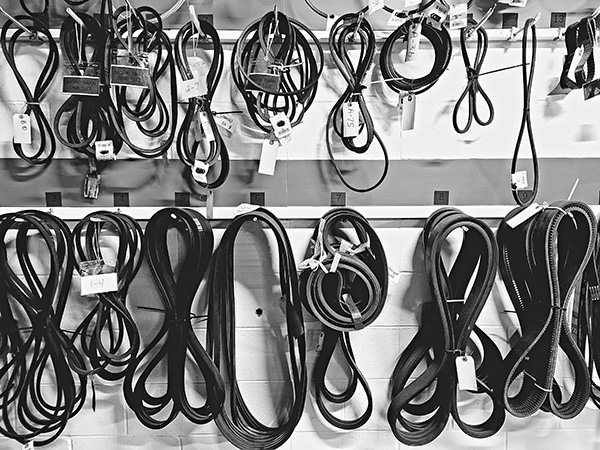
If you’ve ever looked under the hood of your car, you’ve likely seen a complex web of belts and pulleys, and perhaps you’ve wondered how they all work together to keep your engine running. Two of the most important components in this system are the timing belt and the serpentine belt. These belts are essential to your car's operation, but they serve very different purposes. Understanding how they function can help you take better care of your vehicle and avoid major breakdowns.
What Is a Timing Belt?
The timing belt plays a critical role in your car’s engine. Its primary job is to ensure that the engine’s camshaft and crankshaft rotate in sync, allowing the valves to open and close at the right moments. In simple terms, the timing belt controls the timing of your engine’s internal combustion process. If the timing is off, even by a small fraction, it can cause serious damage to your engine, including misfires or complete engine failure.
Timing belts are typically made from rubber with high-tensile fibers that provide strength and flexibility. Over time, however, they can wear out, become brittle, or snap—leading to significant engine problems. Most manufacturers recommend replacing the timing belt every 60,000 to 100,000 miles, depending on the vehicle. If you hear a ticking noise coming from your engine, experience difficulty starting, or see oil leaking from the front of the motor, these could be warning signs that your timing belt is worn and needs to be inspected.
What Is a Serpentine Belt?
The serpentine belt, while no less important, serves a different function altogether. This belt is responsible for powering several of your car’s accessories, such as the alternator, power steering pump, air conditioning compressor, and sometimes even the water pump. Without the serpentine belt, none of these systems would work, which means your car would become pretty uncomfortable and much harder to drive.
Unlike the timing belt, which is tucked away inside the engine, the serpentine belt is located on the exterior of the engine and is easier to inspect or replace. Serpentine belts are generally more durable than timing belts, but they still wear out over time. Signs of a failing serpentine belt include squealing noises, visible cracks, or the belt slipping off its pulleys. Replacing it at the first sign of wear is essential to avoid losing access to critical systems like your car’s cooling or electrical system.
Key Differences Between Timing Belts and Serpentine Belts
While both belts are vital to the operation of your vehicle, their functions and locations set them apart. Timing belts are hidden inside the engine and synchronize key engine components, while serpentine belts are external and drive multiple auxiliary systems. Timing belts generally need more urgent attention because their failure can cause catastrophic engine damage. On the other hand, while a broken serpentine belt can leave you stranded, it’s typically less expensive to replace and won’t destroy your engine if it fails.
Serpentine belts are usually longer, looping around multiple pulleys, while timing belts are shorter and positioned within the engine's timing components. The materials differ slightly as well. Timing belts are often reinforced with fiberglass or Kevlar to withstand the high temperatures and forces within the engine, whereas serpentine belts are designed to be more flexible to work around the various external components.
Which One Should You Replace First?
Both belts are essential, but because timing belts are directly linked to the engine’s internal components, their failure often leads to more expensive repairs. Many drivers don’t realize the importance of timing belt maintenance until it’s too late. If the timing belt snaps, the pistons and valves can collide, leading to bent valves or damaged pistons, which can cost thousands of dollars to repair. So, if you’re approaching the recommended mileage for a timing belt replacement, don’t delay.
Serpentine belts, while critical, are generally less risky. If a serpentine belt breaks, you might lose power steering, electrical functions, or air conditioning, but you can typically pull over and get it fixed without causing permanent damage to the engine. Keep an eye on both belts during regular maintenance checks to avoid inconvenient breakdowns and costly fixes.
Don’t wait until your belts break! Schedule a belt inspection with Sunny Service Center today and keep your car running reliably. From timing belts to serpentine belts, we’ve got the expertise to ensure your vehicle stays in top shape.